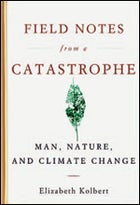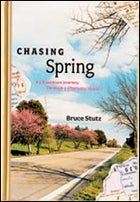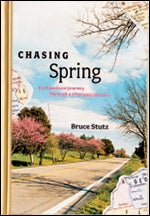When warnings about the earth’s rising temperatures first surfaced in the 1970s, global warming was a long shot in the race toward planetary catastrophe. With overpopulation and nuclear armageddon to fear, few fretted over the capacity of man-made pollution—specifically carbon dioxide—to wrap the earth like a blanket and usher in an era of rising seas and biblical storms. “The first time I heard about global warming, I thought, I don’t believe [it],” an Inupiat elder tells Elizabeth Kolbert in Field Notes From a Catastrophe: Man, Nature, and Climate Change (Bloomsbury, $23). Then, in 1997, with sea ice melting, the Bering Sea pummeled his island village of Shishmaref; within five years, everyone in town was forced to relocate. What does he think of global warming now? “It’s become true,” he says.
From Our Pages
When a friend gave ���ϳԹ��� correspondent Steven Rinella a copy of Le Guide Culinaire, the 1903 classic by French chef Auguste Escoffier, Rinella saw more than a collection of baroque game and fish recipes. He recognized “an inventory of all that is bizarre and glorious and tantalizing about procuring your own food and living off the wild.” And he was determined to follow it to the letter. Expanding on a story that appeared in ���ϳԹ���‘s , The Scavenger’s Guide to Haute Cuisine (Miramax, ) is a warm, funny chronicle of the year Rinella spent hunting and fishing his way from Alaska’s Chugach Range to the rooftops of Manhattan in a quest to re-create rec…Field Notes From a Catastrophe
 Field Notes From a Catastrophe
Field Notes From a CatastropheChasing Spring
 Chasing Spring
Chasing SpringOne of four outstanding new books that detail the unfolding global disaster, Kolbert’s may be the most familiar—Field Notes is an extended version of a New Yorker series published last year—as well as the most accessible, offering an elegant ride through the confusing world of climate science. Kolbert takes a John McPhee–style ramble across the world: In Greenland, Iceland, and poor little Shishmaref, she sees the effects of warming firsthand. In Washington, D.C., the former New York Times political reporter puts her Beltway savvy to use, revealing that most climate-change skepticism originates in the deep pockets of oil and coal companies. “In legitimate scientific circles,” she writes, “it is virtually impossible to find evidence of disagreement over the fundamentals of global warming.”
Tim Flannery, an Australian paleontologist, climate-change authority, and author of the natural-history-infused travelogue Throwim Way Leg (2000), is a member of those legitimate circles. In The Weather Makers: How Man Is Changing the Climate and What It Means For Life On Earth (Atlantic Monthly Press, $24), he produces devastating proof of global warming’s causes and effects. Prior to the Industrial Revolution, he writes, atmospheric CO2 levels were at 280 parts per million. Today, after two centuries of coal- and oil-fired pollution, that level is 380 ppm—enough to swamp the Pacific island of Tuvalu and send polar bears to watery graves. What’s scariest, he explains, is that the rise is gaining momentum at the same time the ocean is losing its ability to absorb excess carbon. (Cold water holds more CO2 than warm water, just as cold Pepsi stays fizzy longer than warm Pepsi.) A brilliant scientist and gifted writer, Flannery makes climate compelling.
If Flannery’s book is a cool elucidation, Eugene Linden’s The Winds of Change: Climate, Weather, and the Destruction of Civilizations (Simon & Schuster, $26) is a 288-page harbinger of doom. The author of 1998’s The Future in Plain Sight, Linden looks at past climate-driven catastrophes, including the drought-driven fall of the Maya, and wonders, as Jared Diamond did in his 2004 blockbuster Collapse, if we’re smart enough to escape their fate. “When past civilizations had to deal with climate change,” he writes, “they may have sometimes felt that they had brought calamity on themselves by offending the gods. Ancient scientists did not have the tools to understand long climate cycles. That is not the case today.” While we have the tools, Linden argues, we lack the political will to use them.
Global warming also affects landscapes closer to home, as Bruce Stutz, former editor of Natural History, discovers in Chasing Spring: An American Journey Through a Changing Season (Scribner, $24). Stutz starts in Texas and drives north as the longer, warmer days sweep life back into the land. In D.C., he learns, most local plant species now flower an average of 4.5 days earlier than they did three decades ago. On Nebraska’s Platte River, he watches thinning populations of sandhill cranes stop over during their migration. “They’re in worse shape now than ever,” one researcher tells him, in part because rivers and lakes—roadside diners for migrating birds—are drying up all over the continent. Stutz ends his journey in the Arctic National Wildlife Refuge, where warming has thrown the ground’s very name—permafrost—into question. “See spring for yourself,” he advises his readers at the end of his journey. “See it now, because it’s changing.”


